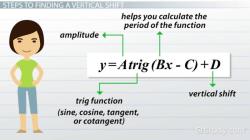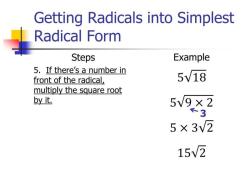How to find direct variation equation?
To find the equation of a direct variation (also known as a direct proportion or a proportionality), you'll need to identify the relationship between two variables and express it using mathematical notation. The equation of a direct variation has the general form:
Where:
- is the dependent variable (the one that depends on the other).
- is the independent variable (the one that influences or determines the other).
- is the constant of proportionality, which represents how the two variables are related.
Here's a step-by-step approach to finding the equation of a direct variation:
Identify the Two Variables: Determine which two variables you're dealing with. One variable should depend on the other, meaning that changes in one variable affect the other in a consistent way.
Observe the Relationship: Examine the data or situation to see if there is a consistent ratio or proportionality between the two variables. In a direct variation, the ratio of to remains constant.
Express the Relationship: Write down the relationship between the variables in the form of a fraction or ratio. For example, if is directly proportional to , you might observe that is always twice as large as . In this case, you would write:
Convert to Equation Form: To express this relationship as an equation, you need to isolate . To do this, multiply both sides of the equation by :
This simplifies to:
Now you have the equation of a direct variation.
Determine the Constant of Proportionality: In this example, the constant of proportionality () is 2. It represents how the two variables are related. In some cases, this constant may have physical significance. For example, if you're working with speed and time, the constant of proportionality might represent the speed of an object.
Use the Equation: With the equation , you can use it to make predictions or solve problems. For any given value of , you can find the corresponding value of by multiplying by 2.
In summary, finding the equation of a direct variation involves identifying the relationship between two variables, expressing that relationship as a ratio, and then converting it into an equation form with the structure, where represents the constant of proportionality. This equation is a powerful tool for understanding and modeling proportional relationships in various fields, including physics, economics, and mathematics.
Finding the Equation of Direct Variation: Methods and Formulas
To find the equation of direct variation, we need to know the relationship between the two variables. The relationship between two variables in direct variation is given by the following formula:
y = kx
where:
- y is the dependent variable
- x is the independent variable
- k is the constant of variation
Determining the Direct Variation Equation from Data
To determine the direct variation equation from data, we need to find the value of the constant of variation, k. We can do this by substituting two known values of x and y into the formula and solving for k.
For example, if we know that when x = 2, y = 6, we can substitute these values into the formula and solve for k as follows:
y = kx
6 = k(2)
k = 3
Therefore, the equation of direct variation is y = 3x.
Understanding Direct Variation and Its Mathematical Representation
Direct variation is a type of proportional relationship between two variables. It means that when one variable changes, the other variable changes proportionally.
The mathematical representation of direct variation is the formula y = kx. This formula states that the dependent variable, y, is equal to the constant of variation, k, multiplied by the independent variable, x.
The constant of variation, k, is a number that represents the proportionality between the two variables. It is always positive and has the same units as the ratio of y to x.
Examples of Direct Variation
Here are some examples of direct variation:
- The distance traveled by a car is directly proportional to the time spent traveling.
- The amount of money earned is directly proportional to the number of hours worked.
- The weight of a bag of apples is directly proportional to the number of apples in the bag.
Conclusion
Direct variation is a type of proportional relationship between two variables. It is represented by the formula y = kx, where y is the dependent variable, x is the independent variable, and k is the constant of variation.
Direct variation is a common type of relationship in the real world, and it has many applications in science, engineering, and economics.











